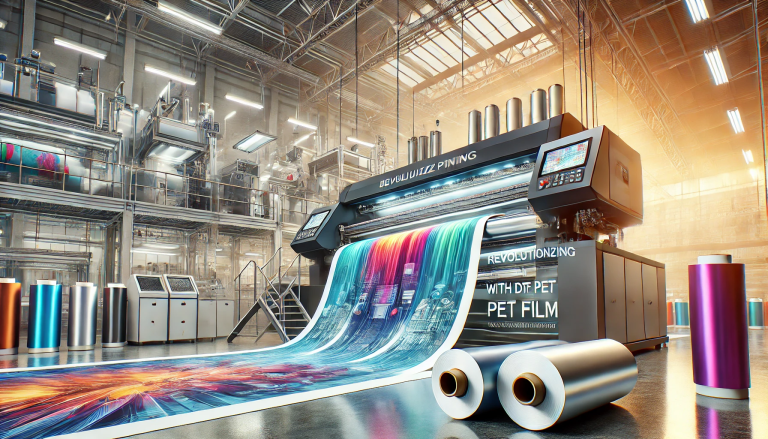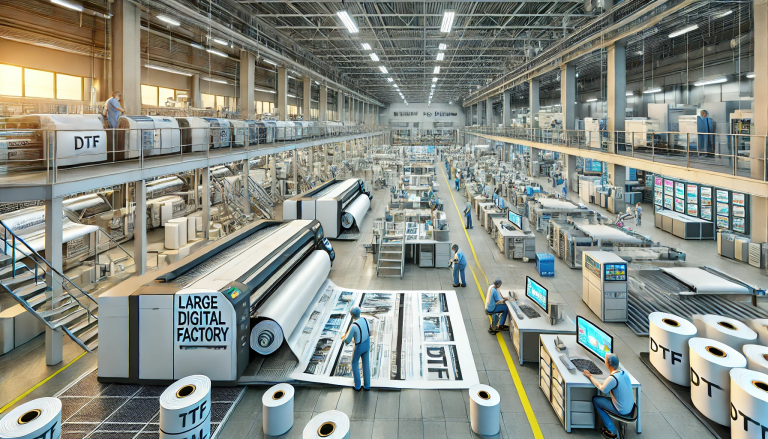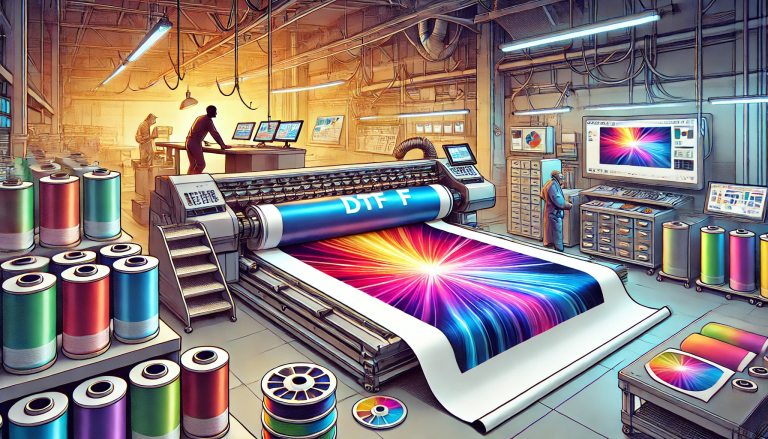Direct-to-Film (DTF) printing has revolutionized the digital printing industry, offering a versatile and cost-effective solution for transferring high-quality prints onto various substrates. One of the key components of DTF printing is the DTF A3 film, which serves as the medium for printing designs before they are transferred to the desired surface. As businesses and individuals seek to maximize efficiency and reduce costs, the question of whether DTF A3 film is reusable has become increasingly important. This article explores the reusability of DTF A3 film, examining its features, limitations, and best practices for recycling or reusing it.
1. Understanding DTF A3 Film
1.1. What Is DTF A3 Film?
DTF A3 film is a specific type of transfer film used in Direct-to-Film printing. The “A3” designation refers to its size, typically measuring 11.7 inches by 16.5 inches (or 297 mm by 420 mm), which makes it suitable for printing medium-sized designs. The film is designed to be loaded into a DTF printer, where the digital design is printed onto the film using specialized ink. The printed film is then coated with a transfer powder, heated, and pressed onto a substrate (e.g., textiles, ceramics, or plastics) to create the final print.
1.2. Key Features of DTF A3 Film
- High-Resolution Printing: Supports high-definition printing, enabling intricate designs and sharp details.
- Wide Color Gamut: Delivers vibrant and accurate color reproduction.
- Compatibility: Works seamlessly with DTF printers and transfer powder.
- Durability: Ensures long-lasting and fade-resistant prints.
- Ease of Use: Designed for straightforward handling and application.
2. The Concept of Reusability in DTF Printing
2.1. Definition of Reusability
In the context of DTF printing, reusability refers to the ability of the DTF A3 film to be used multiple times without compromising print quality or performance. If the film can be cleaned and reused, it offers significant cost savings and environmental benefits.
2.2. Factors Affecting Reusability
Several factors influence whether DTF A3 film can be reused, including:
- Ink Residue: Residue from the printed design and transfer powder must be completely removed for the film to function properly.
- Film Surface Integrity: The surface of the film should remain smooth and free from scratches or damage.
- Cleaning Method: The technique used to clean the film plays a critical role in determining its reusability.
- Film Quality: High-quality films are more likely to be reusable than cheaper, lower-quality options.
- Frequency of Use: Reusing the film too frequently may lead to degradation over time.
3. Is DTF A3 Film Reusable?
3.1. Theoretical Reusability
In theory, DTF A3 film can be reused if the ink residue and transfer powder are thoroughly cleaned from the film’s surface. The film’s smooth and durable design allows it to withstand multiple uses, provided it is handled properly.
3.2. Practical Limitations
However, practical considerations make reusing DTF A3 film challenging:
- Cleaning Difficulty: Removing all ink and powder residue from the film requires specialized cleaning solutions and techniques. Any remaining residue can affect the quality of subsequent prints.
- Surface Damage: Repeated cleaning and handling can cause scratches or wear on the film’s surface, compromising its ability to deliver high-quality prints.
- Time and Effort: The process of cleaning and preparing the film for reuse can be time-consuming and labor-intensive, potentially offsetting the cost savings.
- Economic Viability: In many cases, the cost of cleaning materials and labor may surpass the savings gained from reusing the film.
4. Can DTF A3 Film Be Recycled?
If reusing the film is not feasible, another option to consider is recycling. While DTF A3 films are not typically recyclable through standard recycling programs due to their composition and coatings, some manufacturers offer recycling programs for used films. These programs ensure that the films are disposed of or repurposed in an environmentally responsible manner.
4.1. Manufacturer Recycling Programs
Some DTF film manufacturers have introduced recycling initiatives, where customers can return used films to the company for proper disposal or recycling. This approach helps reduce waste and promotes sustainability.
4.2. Third-Party Recycling Solutions
Alternatively, third-party recycling companies may accept DTF A3 films for disposal or recycling. This option is worth exploring for businesses looking to minimize their environmental impact.
5. Best Practices for Reusing or Recycling DTF A3 Film
5.1. Using High-Quality Films
Investing in high-quality DTF A3 films can improve reusability. These films are designed to withstand repeated use and cleaning while maintaining their surface integrity.
5.2. Proper Cleaning Techniques
When attempting to reuse DTF A3 film, follow these best practices:
- Use Specialized Cleaning Solutions: Avoid harsh chemicals that may damage the film. Instead, use cleaning solutions specifically designed for DTF films.
- Gently Clean the Surface: Scrubbing the film too aggressively can cause scratches. Use a soft cloth or sponge to gently remove residue.
- Dry Completely: Ensure the film is completely dry before reusing it to prevent smudging or ink adhesion issues during printing.
5.3. Monitor Film Condition
Regularly inspect the film for signs of wear, such as scratches, cracks, or discoloration. If the film shows significant damage, it may be more cost-effective to replace it rather than attempt to reuse it.
5.4. Consider Recycling Instead of Reusing
If reusing the film proves too time-consuming or impractical, consider recycling it through a manufacturer’s program or a third-party recycler. Recycling is a more sustainable option that aligns with environmental goals.
6. Economic and Environmental Implications
6.1. Cost Savings
Reusing DTF A3 film can lead to cost savings, particularly for businesses that print in high volumes. However, the savings must be weighed against the cost of cleaning materials, labor, and the potential for reduced print quality.
6.2. Environmental Benefits
Recycling DTF A3 film helps minimize waste and reduce the environmental impact of DTF printing. It aligns with the growing demand for sustainable printing practices and supports corporate social responsibility initiatives.
7. Conclusion
DTF A3 film is an essential component of the DTF printing process, enabling high-quality, versatile printing on various substrates. While the film can theoretically be reused, practical limitations such as cleaning difficulty, surface damage, and time-related costs make reusing it challenging. For most users, recycling the film through manufacturer programs or third-party recyclers is a more feasible and sustainable option.
Whether you choose to reuse or recycle your DTF A3 film, it is important to prioritize quality and sustainability in your printing practices. By investing in high-quality films and adhering to best practices, you can maximize efficiency, reduce costs, and minimize your environmental footprint. As the DTF printing industry continues to evolve, finding innovative solutions for reusing and recycling materials will play a crucial role in its growth and development.





